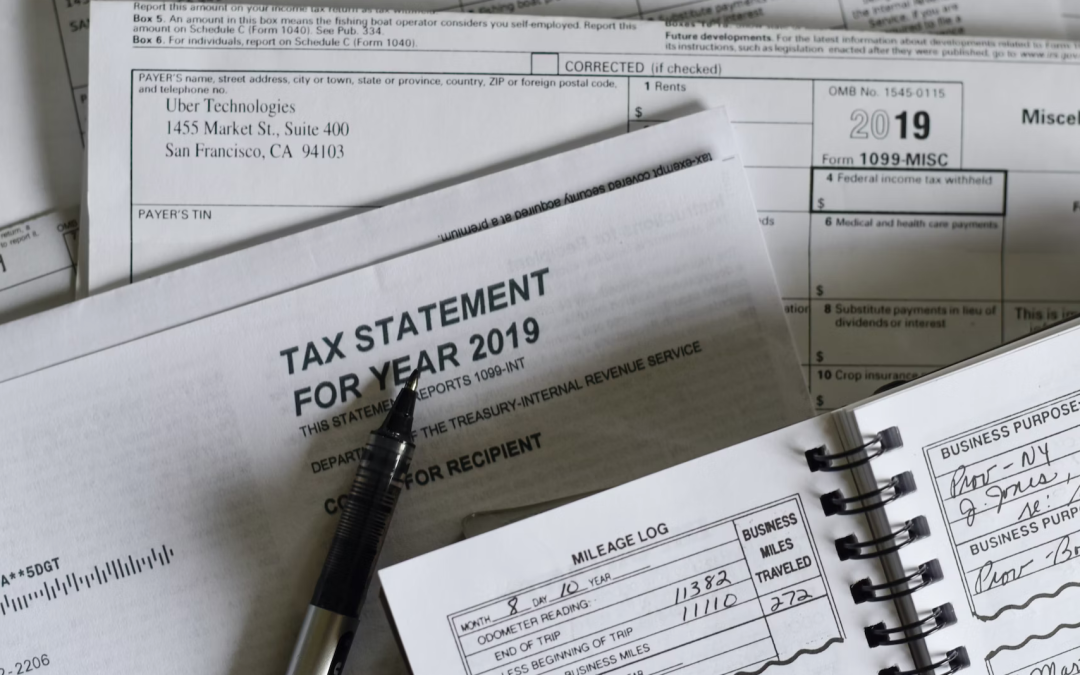
by Andrea Carson | Oct 11, 2023 | SAVE MONEY
Budgeting is a crucial financial tool that empowers individuals and households to manage their money effectively, achieve financial goals, and maintain financial stability. However, for many people, the thought of budgeting can be intimidating and overwhelming. The good news is that budgeting doesn’t have to be complex or stressful. In fact, simplifying your budget can make it more manageable and increase your chances of sticking to it. In this article, we’ll explore some practical tips on how to simplify your budget and take control of your finances with ease.
1. Start with Your Financial Goals
Before diving into the details of your budget, begin by setting clear financial goals. Whether you want to save for a vacation, pay off debt, or build an emergency fund, having a clear purpose for your budget will help you stay motivated and focused. Prioritizing your goals will make it easier to allocate your resources accordingly.
2. Track Your Income
Knowing how much money you have coming in each month is the foundation of any budget. Calculate your total monthly income, which includes your salary, bonuses, side income, and any other sources of cash flow. Make sure you are working with accurate figures to avoid surprises or discrepancies in your budget.
3. List Your Essential Expenses
Identify your fixed, non-negotiable monthly expenses such as rent or mortgage, utilities, insurance, and transportation costs. These are your essential expenses, and they should be allocated first in your budget.
4. Categorize Variable Expenses
Variable expenses include groceries, dining out, entertainment, and other discretionary spending. Categorize these expenses and set reasonable limits for each category. Consider using budgeting apps or spreadsheets to track your spending in real-time and ensure you stay within your budgeted amounts.
5. Consolidate Debt Payments
If you have multiple debts, such as credit cards, loans, or medical bills, consider consolidating them into a single, more manageable payment. Debt consolidation can simplify your budget by reducing the number of payments you need to track and potentially lowering your interest rates.
6. Embrace the 50/30/20 Rule
A straightforward budgeting guideline is the 50/30/20 rule. Allocate 50% of your income to needs (essential expenses), 30% to wants (variable expenses), and 20% to savings and debt repayment. This simple rule provides a balanced approach to managing your finances while keeping your budget uncomplicated.
7. Automate Savings and Bill Payments
Simplify your budget by automating your savings and bill payments. Set up automatic transfers to your savings account and schedule automatic bill payments through your bank or financial institution. This ensures that you never miss a payment and consistently save for your financial goals.
8. Build an Emergency Fund
An emergency fund is a financial safety net that can help you navigate unexpected expenses without derailing your budget. Start small by saving a portion of your income each month until you have built up at least three to six months’ worth of living expenses.
9. Review and Adjust Regularly
Your financial situation can change over time, so it’s important to review and adjust your budget periodically. Life events like job changes, marriage, or the birth of a child may necessitate adjustments to your budget. Make sure your budget aligns with your current goals and circumstances.
10. Seek Professional Help
If you find that your financial situation is particularly complex or you’re struggling to manage your budget effectively, consider seeking help from a financial advisor or counselor. They can provide expert guidance and help you simplify your budget to meet your financial goals.
Budgeting doesn’t have to be complicated or stressful. By following these simple steps and adopting a clear, organized approach to managing your finances, you can simplify your budget and take control of your financial future. Remember that the key to successful budgeting is consistency and flexibility – adjust your budget as needed to accommodate your evolving financial goals and circumstances. With a simplified budget in place, you’ll be well on your way to achieving financial peace of mind.

by Andrea Carson | Oct 4, 2023 | Finances
Overdraft charges can be a frustrating and costly experience for many consumers. These fees occur when you spend more money than you have in your bank account, resulting in negative balances and penalty fees from your bank. Fortunately, there are several methods you can employ to eliminate or reduce these charges and regain control of your finances. In this article, we’ll explore four effective strategies to help you avoid overdraft fees.
1. Keep a Close Eye on Your Account Balances
One of the most straightforward ways to prevent overdraft charges is by closely monitoring your bank account balances. Many banks offer online and mobile banking apps that allow you to check your account balance in real-time. Regularly reviewing your transactions and keeping an eye on your balance can help you stay aware of your financial situation.You can set up low balance alerts or notifications that will alert you when your account balance falls below a certain threshold. This proactive approach allows you to take immediate action to avoid overdrafts by transferring funds or adjusting your spending.
2. Link a Savings Account or Overdraft Protection
Many banks offer overdraft protection services that can help you avoid costly overdraft fees. These services typically involve linking your checking account to a savings account, credit card, or line of credit. If you overdraw your checking account, the bank will automatically transfer money from the linked account to cover the deficit. While overdraft protection may come with its own fees or interest charges, they are generally lower than overdraft fees. It’s essential to understand the terms and costs associated with overdraft protection and choose an option that aligns with your financial goals and needs.
3. Set Up Account Alerts and Notifications
Most banks offer customizable account alerts and notifications that can help you manage your finances more effectively. By setting up alerts for various account activities, such as low balances, large transactions, or bill due dates, you can stay informed about your financial situation and take timely action to prevent overdrafts. These alerts can be delivered through email, text messages, or push notifications on your mobile banking app. Utilizing these tools can help you maintain better control over your finances and reduce the risk of overdraft charges.
4. Create a Buffer in Your Account
To prevent overdrafts, consider building a buffer in your checking account. This means keeping a minimum balance in your account that serves as a safety net. The buffer amount should be sufficient to cover unexpected expenses or fluctuations in your spending patterns. Calculating your buffer amount can be challenging, as it depends on your individual financial circumstances. Review your past spending habits and expenses to determine an appropriate buffer size that works for you. Keep in mind that this buffer should not be seen as “extra” spending money but rather as a precautionary measure to prevent overdrafts. Overdraft charges can quickly add up and create financial stress, but with the right strategies in place, you can eliminate or significantly reduce these fees. By actively monitoring your account balances, linking a savings account or setting up overdraft protection, utilizing account alerts, and maintaining a buffer in your account, you can take control of your finances and avoid the frustration of overdraft charges. Remember that responsible financial management is key to avoiding these fees and achieving better financial stability.

by Andrea Carson | Sep 27, 2023 | Finances
Title: Investing in Education: Financing Your Child’s Private School Tuition
Choosing to send your child to a private school is a significant investment in their education and future. While private schools offer exceptional learning environments and opportunities, the associated tuition costs can be substantial. Fortunately, various strategies and resources are available to help you navigate the financial aspects of private school education. In this blog, we’ll explore effective ways to finance your child’s private school tuition while ensuring they receive the education they deserve.
**Budgeting and Financial Planning**
Before embarking on your child’s private school journey, it’s essential to assess your current financial situation and create a comprehensive budget. Review your income, expenses, and savings goals to determine how much you can allocate towards tuition. Factor in other potential costs such as uniforms, books, transportation, and extracurricular activities. Setting a clear budget will help you manage tuition payments more effectively.
**Research Financial Aid and Scholarships**
Many private schools offer financial aid programs and scholarships to help alleviate the financial burden of tuition. Reach out to the schools you’re interested in and inquire about their financial assistance options. Scholarships can be merit-based, need-based, or targeted toward specific talents or interests. Thoroughly researching and applying for these opportunities can significantly reduce tuition costs.
**Flexible Payment Plans**
Private schools often understand the financial strain that tuition payments can pose on families. Many institutions offer flexible payment plans that allow you to spread out tuition payments over several months instead of making a lump-sum payment. This can ease the immediate financial impact and provide more manageable monthly payments.
**529 Plans and Education Savings Accounts**
529 plans and education savings accounts (ESAs) are specifically designed to help families save for education expenses. Contributions to these accounts are usually tax-advantaged, and when used for qualifying educational expenses, withdrawals are tax-free. Starting early and regularly contributing to these accounts can build a significant fund to cover private school tuition.
**Consider Loans and Financing Options**
While taking out loans should be a last resort, some families may choose to explore education-specific loans or personal loans to cover tuition costs. Before committing to a loan, carefully review the terms and interest rates to ensure that it’s a viable and manageable option for your financial situation.
**Tap into Home Equity**
If you’re a homeowner, you might consider leveraging your home equity to finance your child’s private school tuition. Home equity loans or lines of credit can provide access to funds with potentially lower interest rates than other borrowing options. However, this approach should be approached cautiously, considering the risks associated with using your home as collateral.
**Consult with Financial Advisors**
Navigating the complexities of financing private school tuition can be challenging. Seeking advice from financial advisors or education consultants can provide valuable insights into the best strategies for your individual circumstances. They can help you make informed decisions that align with your financial goals.
Investing in your child’s education is one of the most important decisions you’ll make as a parent. While private school tuition can be a significant financial commitment, the benefits of a high-quality education and enriched learning experience can be immeasurable. By approaching the financial aspects with careful planning, research, and consideration of available resources, you can ensure that your child receives the education they deserve without compromising your financial stability. Remember, the investment you make today can yield lifelong dividends in your child’s academic and personal growth.

by Andrea Carson | Sep 20, 2023 | Entrepreneurship, Finances, Taxes
As an entrepreneur, managing your business expenses is a critical component of maintaining a healthy financial foundation. Keeping a close watch on your expenses not only ensures that you stay within budget but also provides valuable insights into your business’s financial health and growth potential. In this blog, we’ll delve into effective strategies and tools to help you stay on top of your business expenses, streamline your financial processes, and set the stage for success.
1. **Create a Dedicated Business Account**
Separating your personal and business finances is essential. Open a dedicated business bank account to ensure that all your business transactions are centralized and easy to track. This separation simplifies record-keeping and prevents confusion when categorizing expenses, making it easier to prepare accurate financial statements come tax time.
2. **Digital Expense Tracking Tools**
Embrace technology by using digital expense tracking tools tailored for entrepreneurs. Apps like QuickBooks, FreshBooks, and Expensify offer user-friendly interfaces that help you record expenses, categorize them, and generate detailed reports. These tools can automate data entry, reducing the likelihood of manual errors and saving you time.
3. **Organize Receipts Digitally**
Say goodbye to the hassle of paper receipts piling up in your workspace. Utilize apps like Evernote, Shoeboxed, or Adobe Scan to capture and store digital copies of your receipts. This practice not only saves physical space but also makes it easier to search for and retrieve receipts when needed.
4. **Set Up Expense Categories**
Establish a clear and detailed system of expense categories that align with your business’s activities. Categories might include marketing, office supplies, travel, utilities, and more. Assign each expense to the appropriate category as soon as it’s incurred to streamline the tracking process and gain a comprehensive view of where your money is going.
5. **Regularly Reconcile Accounts**
Frequently reconcile your business accounts to ensure that your recorded expenses match your bank statements. This practice helps identify any discrepancies or errors early on, preventing financial confusion down the line. Reconciliation also aids in spotting potential fraudulent activities and maintaining the accuracy of your financial records.
6. **Implement a Receipt Approval Process**
If you have employees or contractors making business-related purchases, establish a receipt approval process. Require them to provide receipts and detailed explanations of their expenses before reimbursement. This not only encourages responsible spending but also adds an extra layer of accountability.
7. **Schedule Regular Expense Reviews**
Set aside time on a weekly or monthly basis to review your business expenses. Analyze spending patterns, identify areas of overspending, and make informed decisions about where to cut back or allocate more funds. Regular expense reviews also allow you to gauge the effectiveness of your budgeting strategies.
8. **Plan for Taxes**
Don’t wait until tax season to organize your expenses. Throughout the year, keep track of deductible expenses, such as office supplies, travel expenses, and professional services. This proactive approach makes tax preparation less overwhelming and maximizes your potential deductions.
Maintaining a clear record of your business expenses is a fundamental practice that contributes to the success of your entrepreneurial journey. By establishing organized processes, leveraging digital tools, and staying vigilant about tracking your spending, you’ll gain a deep understanding of your business’s financial landscape. This knowledge empowers you to make informed decisions, optimize your budget, and ultimately pave the way for sustainable growth and profitability. Remember, the effort you invest in tracking your business expenses today will pay off in the form of financial clarity and a solid foundation for the future.

by Andrea Carson | Sep 13, 2023 | Finances
Managing your money effectively has become more crucial in an increasingly complex financial landscape. Thankfully, technology has kept pace with this demand, offering powerful money management tools to help you take control of your finances. Whether you’re tracking expenses, creating budgets, or planning for your financial future, the best money management tools of 2023 have got you covered. In this blog, we’ll explore some of the top tools that can empower you to make informed financial decisions and achieve your goals.
1. **Mint**
Mint has been a staple in the world of personal finance for years, and its continued relevance in 2023 is a testament to its effectiveness. Mint offers a comprehensive overview of your financial life by syncing with your bank accounts, credit cards, and other financial accounts. It tracks your income, expenses, and investments and provides insights into your spending habits. With customizable budgeting features and bill-tracking capabilities, Mint helps you stay on top of your financial commitments and save money.
2. **You Need A Budget (YNAB)**
YNAB takes budgeting to the next level by adopting a unique philosophy that encourages users to “give every dollar a job.” This zero-based budgeting approach ensures that every dollar you earn has a purpose, whether for bills, savings, or discretionary spending. YNAB’s user-friendly interface and mobile app enable you to track your spending in real-time, adjust your budget as needed, and achieve your financial goals with intention.
3. **Personal Capital**
For those focused on long-term financial planning and investment management, Personal Capital is a top choice. This tool offers a holistic view of your financial portfolio, including investments, retirement accounts, and assets. It provides insights into your net worth, investment performance, and retirement readiness. Personal Capital’s retirement planner tool lets you model different scenarios to ensure a comfortable retirement. It’s an ideal choice for investors looking to make data-driven decisions.
4. **PocketGuard**
PocketGuard is designed with simplicity in mind, making it an excellent choice for users who want a straightforward way to manage their money. By linking your financial accounts, PocketGuard automatically categorizes your transactions, tracks your income and spending, and offers personalized budgeting recommendations. Its unique feature, “In My Pocket,” shows you how much money you have left after accounting for bills and savings, giving you a clear picture of your disposable income.
5. **Wally**
Wally offers a seamless expense tracking experience, allowing you to capture receipts, categorize spending, and set savings goals effortlessly. Its intuitive interface makes it easy to visualize your spending patterns and identify areas where you can cut back. Wally also offers a feature for splitting expenses with friends and family, making it a great tool for social outings without financial confusion.
6. **Simplifi by Quicken**
Simplifi is a robust money management tool that provides a comprehensive view of your finances, all while simplifying complex tasks. With features like expense tracking, bill management, and customized budgeting, Simplifi aims to streamline your financial life. Its ability to track both personal and business finances in one place sets it apart for entrepreneurs and freelancers.
Conclusion
In 2023, managing your money has never been easier, thanks to an array of sophisticated money management tools at your disposal. Whether you’re tracking daily expenses, planning for retirement, or striving to achieve your financial goals, these tools can empower you with insights, organization, and control. Remember that the best tool for you depends on your unique needs and preferences, so take the time to explore your options and find the one that aligns perfectly with your financial aspirations. With these tools in hand, you’re well on your way to mastering your finances and securing a brighter financial future.





